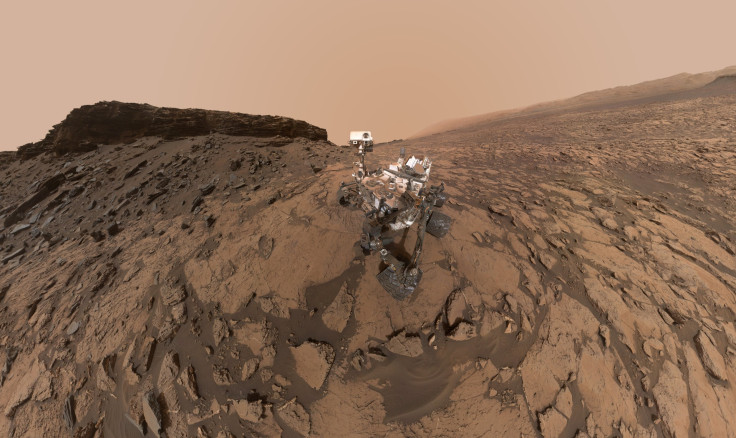NASA’s Curiosity Rover To Seek Fresh Insights Into Mars’ Water-Rich History Over Next 2 Years

For NASA’s Curiosity, the adventure on Mars is far from over. The rover, which has been trundling around on the surface of the red planet for over four years, will, over the next two years, drive toward uphill destinations, including a ridge topped with material rich in iron-oxide minerals, the space agency announced Monday.
“We continue to reach higher and younger layers on Mount Sharp,” Curiosity Project Scientist Ashwin Vasavada from NASA’s Jet Propulsion Laboratory in Pasadena, California, said in a statement. “Even after four years of exploring near and on the mountain, it still has the potential to completely surprise us.”
So what’s on Curiosity’s agenda for the next two years?
According to NASA, the rover will, for at least the first half of its extended two-year mission, investigate the upper half of the Murray formation located on the lower reaches of Mount Sharp — a Mount-Rainier-size structure where Curiosity recently investigated evidence of ancient water bodies.
Previous drilling operations carried out by Curiosity in the region have revealed that the formation consists primarily of mudstone, which is created when mud accumulates at the bottom of lakes. The findings bolster the theory that Mars once hosted water lakes for a substantial period in its history, and, over the next two years, the Curiosity team at NASA hopes to gather more evidence for such ancient water bodies.
“We will see whether that record of lakes continues further,” Vasavada said. “The more vertical thickness we see, the longer the lakes were present, and the longer habitable conditions existed here. Did the ancient environment change over time? Will the type of evidence we've found so far transition to something else?”
Additional extensions for exploring farther up Mount Sharp may also be granted once this mission is over, NASA said.
“This mission, as it explores the succession of rock layers, is reading the 'pages' of Martian history — changing our understanding of Mars and how the planet has evolved,” Curiosity Program Scientist Michael Meyer said in the statement. “Curiosity has been and will be a cornerstone in our plans for future missions.”
© Copyright IBTimes 2025. All rights reserved.






















